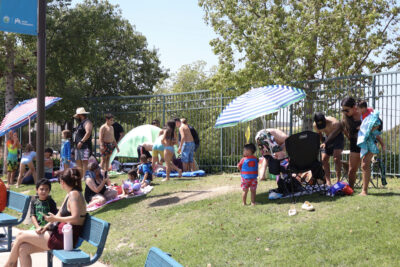Summer energy bills can be a real shock, with air conditioning often accounting for 50-70% of your monthly electricity costs. The good news? Minor changes to how you use and maintain your AC system can lead to significant savings while keeping your home perfectly comfortable. Whether you’re looking to cut costs or reduce your environmental footprint, these practical tips will help you maximize your air conditioner’s efficiency.
The magic number for energy efficiency is 78°F when you’re home and awake. For every degree you raise your thermostat above 72°F, you can save 6-8% on your cooling costs. When you’re away from home, consider setting it to 85°F or using a programmable thermostat to adjust the temperature automatically throughout the day. Of course, suppose your system is older and struggling to maintain these temperatures efficiently. In that case, it might be time to explore Air conditioner replacement near me for a more energy-efficient solution.
Start with the Right Temperature Settings
Don’t fall into the trap of cranking the thermostat way down, thinking it will cool your house faster. Your AC works at the same rate regardless of the temperature setting, so setting it to 65°F won’t cool your home any quicker than 75°F – it will just run longer and waste energy.
Keep Your Air Filters Clean
This simple maintenance task can improve your AC’s efficiency by 5-15%. Dirty filters force your system to work harder, consuming more energy and potentially shortening its lifespan. Check your filters monthly and replace them every 1-3 months, depending on factors like pet ownership, allergies, and local air quality.
A good rule of thumb: if you can’t see light through your filter when you hold it up, it’s time for a replacement.
Optimize Your Home’s Airflow
Ensure all vents are open and unobstructed by furniture, curtains, or other items. Closing vents in unused rooms might seem logical, but it can reduce efficiency by creating pressure imbalances in your ductwork. Instead, consider using a zoning system if you want to control temperatures in different areas of your home.
Inspect your ductwork for leaks, especially in unconditioned areas such as attics or crawl spaces. Sealing duct leaks can improve efficiency by up to 20% and is often a simple DIY project using duct sealant or metal tape.
Harness the Power of Fans
Ceiling fans can make a room feel 4-6°F cooler, allowing you to set your thermostat higher while maintaining a comfortable temperature. Remember that fans cool people, not rooms, so turn them off when you leave. The counterclockwise rotation pushes air down, creating a wind-chill effect that makes you feel cooler.
Maintain Your Outdoor Unit
Your AC’s outdoor condenser unit needs sufficient space to operate correctly. Keep it clear of debris, leaves, and vegetation – maintain at least two feet of clearance on all sides. Gently clean the unit monthly by spraying it down with a garden hose to remove dirt and debris that can reduce efficiency.
Shade your outdoor unit if possible, but ensure that adequate airflow is maintained. A unit operating in shade can be 10% more efficient than one in direct sunlight.
Consider Smart Upgrades
Programmable or smart thermostats can save 10-15% on cooling costs by automatically adjusting temperatures based on your schedule. These devices learn your preferences and can even be controlled remotely, ensuring you’re never cooling an empty house.
Regular Professional Maintenance
Annual professional tune-ups can keep your system running at peak efficiency. A qualified technician will check refrigerant levels, clean coils, inspect electrical connections, and identify potential issues before they become expensive problems.
Know When It’s Time for Replacement
If your AC system is over 10-15 years old, frequently breaks down, or struggles to maintain comfortable temperatures, consider replacement. Modern units are significantly more efficient than older models – some newer systems use 30-50% less energy than units from the 1990s.
When researching your options, consult with qualified local contractors who can assess your current system and recommend energy-efficient replacement options that fit your home and budget.
Additional Energy-Saving Strategies
Seal Your Home: Weatherstrip doors and windows, caulk gaps, and ensure your home is adequately insulated. Even small air leaks can cause your AC to work harder than necessary.
Use Window Treatments: Close blinds and curtains during the day to block out heat-generating sunlight. Consider thermal curtains or reflective window film for maximum effect.
Reduce Heat Sources: Limit use of heat-generating appliances during the hottest parts of the day. Cook outdoors when possible, use the microwave instead of the oven, and switch to LED light bulbs that produce less heat.
Time Your Activities: Run dishwashers, washing machines, and dryers during cooler parts of the day or evening to reduce the overall heat load in your home.
Your Path to Cooling Savings
Energy efficiency doesn’t require significant lifestyle changes or expensive upgrades. By implementing these practical tips, most homeowners can reduce their cooling costs by 20-30% while maintaining a comfortable living environment. Start with simple, no-cost solutions, such as adjusting your thermostat and cleaning your filters. Then, consider larger improvements, like programmable thermostats or system upgrades, as your budget allows.
Remember, every degree matters, every clean filter helps, and every slight improvement adds up to significant savings over time. Your wallet – and the environment – will thank you for taking a proactive approach to AC energy efficiency.






